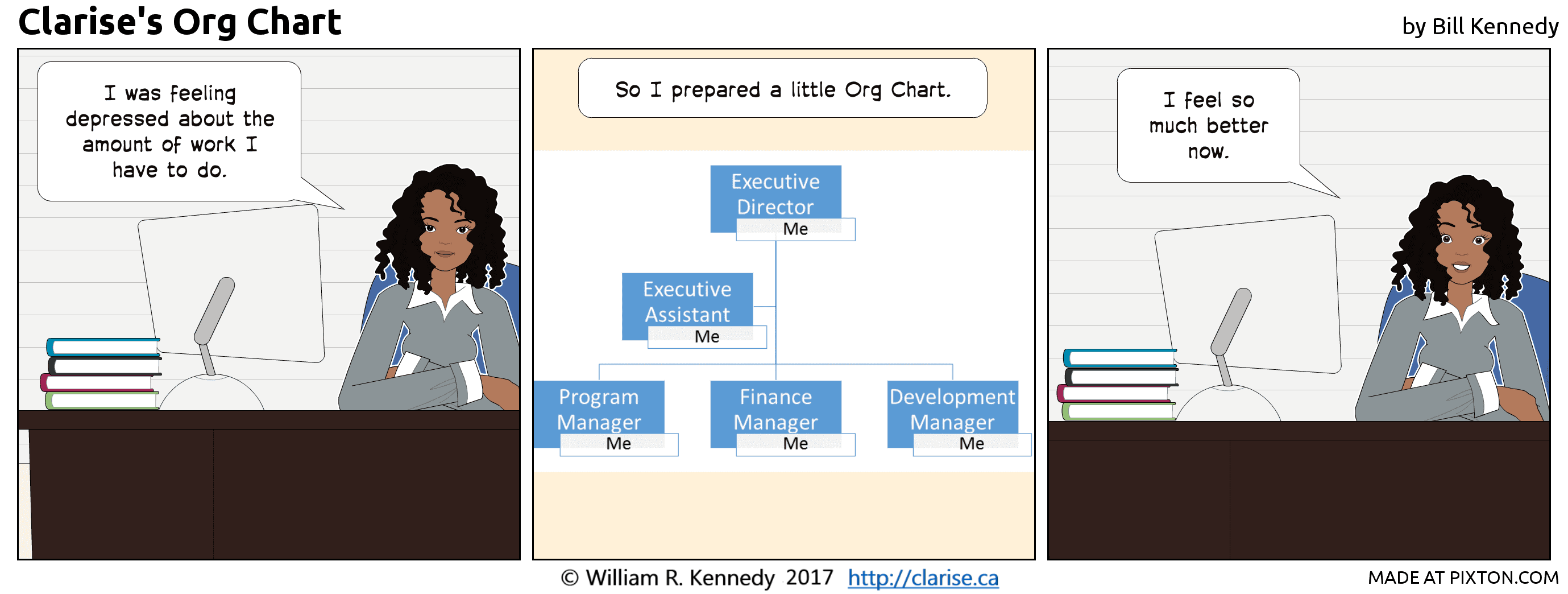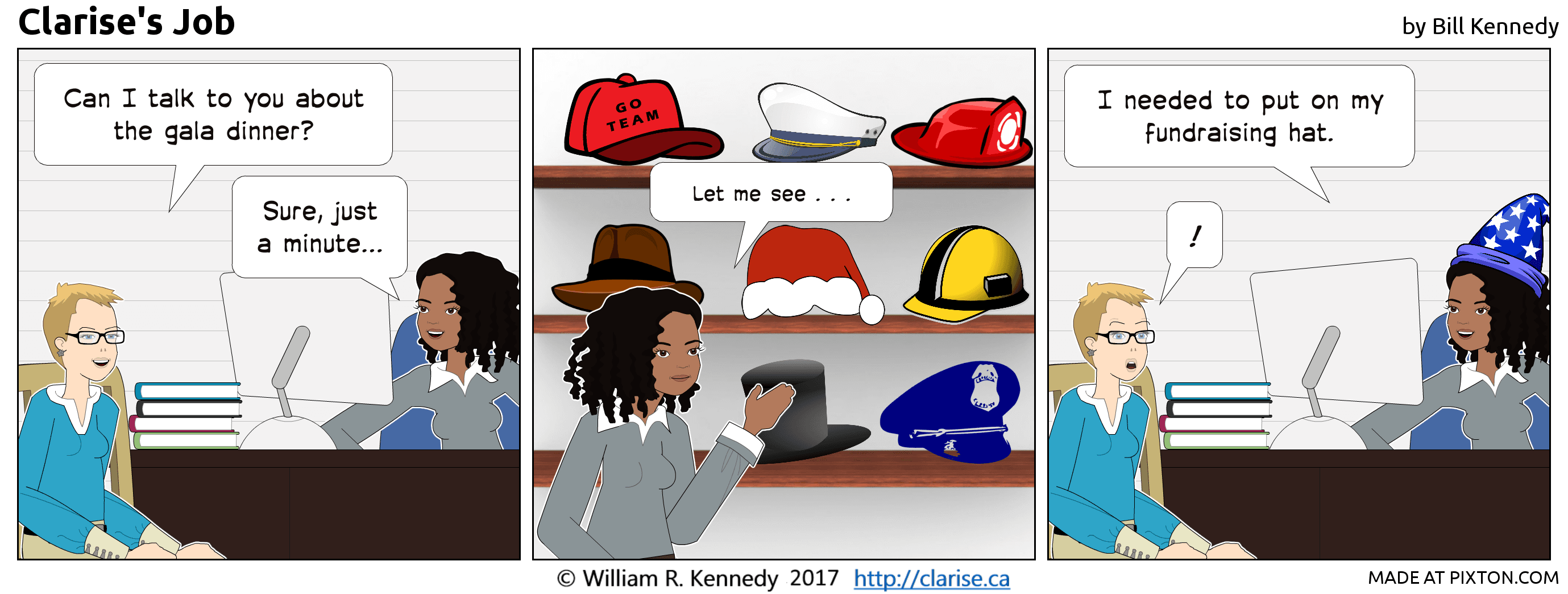Clarise – Executive Director

Job Description
Executive Director: Someone who does whatever is necessary to deliver the organization’s programs, but doesn’t do it all themself. When I saw an Executive Director cutting up raw vegetables an hour before the organization’s Annual General Meeting, I knew I had to say something.
You attend the official meetings with the Board, the Executive, the sub-committees, task groups and retreats. You chair the management meetings. You give tours to visitors and explanations to prospective donors. You sign the cheques, the expense claims, the contracts, the tax forms, the funders’ reports, and each and every donation receipt. You handle vacation requests, public complaints, personality conflicts and the questions that nobody else knows how to deal with. You are sensitive to issues of diversity, pay equity, cross cultural communications, environmental impact, hazardous materials, donor fatigue, and cash flow. You work early mornings, late nights and weekends. Occasionally you take time off to be with your family, but even when you are on vacation, you leave instructions about how you can be reached.
This problem is wide spread. You are not alone. So take a deep breath and realize that you can’t do it all. It’s time to step out of the picture and re-strategize.
You need volunteers!
As a professional accountant with a lot of charity experience, I frequently get asked to join charity Boards, always as Treasurer. Knowing the time commitment involved, I tend to politely decline. It’s the same story all over: the people you’d really want tend to be busy already. Here are some tips for attracting time-poor people.
Your Objectives
- Preparation – You have an organization chart with holes in it that need to be filled. Put it in a drawer for a while and instead figure out what specific questions do you need answers to. What work needs to be done? Think in terms of projects, not ongoing, multi-year commitments. Then write it all down.
- Bit Sized Pieces – Break the work down into chunks that would take a professional less than a day to do. Think of ways the work could be divided between two people. Prioritize it so the most urgent and important items are at the top of the list.
Your Volunteers’ Objectives
Obviously, the people who sign on with your organization are people who support the organization’s mission, but let’s go a step or two beyond that and think about how you can make the experience even more attractive.
- Intellectual Appeal – Pose your questions as an interesting challenge, like a puzzle, that is worth solving.
- Social Appeal – What is missing from your volunteers’ life? Is it time with likeminded professionals? Is it time doing something with their family? Is there a way that you can structure the work so that they get what they need as well?
- Buddy Up – One organization I worked with insisted that every committee be headed by co-chairs. They found that it reduced the actual and perceived burden on the volunteers as well as reducing the possibility of personality conflicts.
- Professional Development – Board experience is useful for any junior professional, but it may take a nudge from a more experienced professional. If someone turns you down for a position, ask them if they would be willing to mentor (i.e. volunteer) someone else in their firm who needs the experience.
- Personal Development – A charity is a place to learn something new. After serving as Treasurer for a charity for a couple of years, I was ready for a change. I volunteered for the Fundraising Committee and received valuable training (for free!) from the Chair. When his term was over, I took over. That experience has made me a much more effective charity consultant.
- Fun – Meetings don’t have to occur in the Board Room. When I asked a committee chair how she was so successful at finding volunteers, she told me that she held all the meetings at her house, and, in a stage whisper she added, “There’s usually wine involved.”
Finally, after reading this list, if recruiting the people you need isn’t something you see yourself doing, then maybe the one item on your to-do list is to recruit someone who can. After all, you can’t wear all the hats!
Do you have some recruiting tips to add or some stories to share? Please add them to the comments below.


Leave a Reply